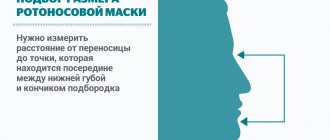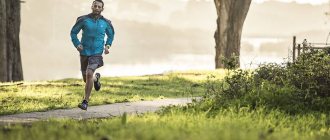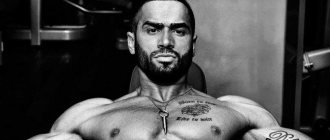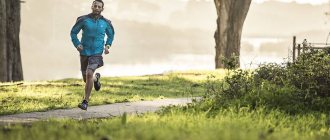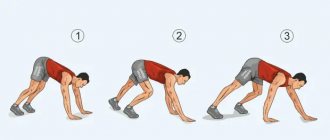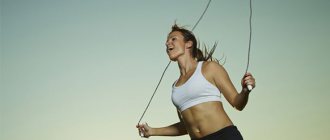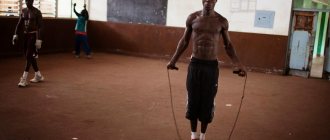There is a lot of focus on wearing masks these days. But there's one you might want to wear even after COVID-19 restrictions lift.
Elevation Training Mask 2.0 from TRAININGMASK is a fitness mask that looks like a cross between a respirator and a gas mask, capable of improving your fitness level by training your breathing. It develops respiratory strength, which, as a result, increases endurance during training, and allows you to quickly restore lost strength upon completion.
Breathing muscle trainer
Elevation Training Mask 2.0 is a patented device designed to significantly increase the endurance of a person involved in sports, as well as improve his physical performance. The training mask, made of thick rubber and water-absorbing neoprene, creates resistance during inhalation and exhalation, which has a strengthening effect on the diaphragm and other respiratory muscles.
It has six intensity levels, making it suitable for any workout.
From the age of 16, you can engage in the following sports:
- Weightlifting.
- Crossfit.
- Martial arts.
- Boxing.
- Hockey.
- Run.
- Skis.
- Cycling.
- Football.
- Rugby, etc.
How to use a breathing mask
A breathing mask is a dumbbell for your lungs! The design is equipped with 4 levels of resistance and unique PRS technology. The main advantage of the training mask lies precisely in the PRS innovation - easy switching of resistance levels without interruption from training.
The accessory is made of medical silicone, which suppresses the development of allergies and prevents skin irritation. The mask fits tightly to your face during training, which means you will not feel any discomfort. The device is secured using a strap located above the head.
You can use the Training Mask for fitness, football, hockey, running, athletics and tennis. The original Austrian development is suitable for professional athletes and beginners who want to increase the functional level of the body.
Do not overdo it during exercise, because brain hypoxia can have negative consequences.
Correct use of the mask means that you must first get used to the device, and only after that start training. The instructions describe light warm-up exercises that will help speed up adaptation:
- After putting on the mask, set the required resistance level. If you're just starting out, choose the minimum level.
- Perform breathing exercises: take a deep breath through your nose and exhale through your mouth.
- Walk around the room for 3 minutes and pay close attention to your breathing. It should be smooth and calm.
- After this, start jumping and swinging your arms. You will feel your heart rate increase, repeat the exercises for 2 minutes.
- Exercises for the lower extremities. Starting position: feet shoulder-width apart. Start doing a water-swiping motion for 30 seconds, first on one leg and then on the other. Remember to track your breathing.
- Move on to lunges. Perform the movements for 1 minute, control your posture.
If after the warm-up you feel comfortable, then proceed to the exercises of the main workout. For clarity, you can watch a short video instruction demonstrating the correct execution of the warm-up.
Despite the rather complex design of the Training Mask, it is easy to use. After each workout, do not forget to wash the mask and treat it with a special spray. Its service life depends on quality care.
Pros and cons of the accessory
Like any product, a breathing mask has its positive and negative sides. Among the undoubted advantages:
- an alternative to long training sessions;
- increasing endurance;
- formation of uniform breathing during and after physical activity;
- improved blood circulation;
- increased production of red blood cells.
In addition to the already stated advantages, the Elevation Training Mask provides a consistently calm mental state, which is associated with the establishment of a uniform ratio of oxygen and carbon dioxide.
Athletes, after using the training mask, claim that it gives them additional motivation. In fact, this indicator is developed at the level of self-hypnosis. Today, you can find many videos on the Internet demonstrating the activities of professional athletes who use Training Mask.
Manufacturers have taken care of the assortment, which is rich in a variety of “sleeves” of masks, so that each athlete chooses a unique model for himself.
However, despite all the positive facts, experts noticed the following disadvantages:
- decrease in oxygen concentration in the blood;
- labored breathing;
- contraindications.
Before purchasing a breathing mask, consult a specialist. Classes in Training Mask are contraindicated if you have:
- heart diseases;
- vascular diseases;
- pathologies of the respiratory system.
Also, training is not recommended at too low or high temperatures.
If the operating conditions are not followed, you may faint, your heart rhythm may be disrupted, and brain hypoxia may develop. The risk group consists of people suffering from bronchial asthma.
Before using the mask, consult your doctor.
How it works?
When you exercise, what you're really trying to do is reach your respiratory compensation threshold, which is the transition from high-intensity exercise to over-exertion at the point where fatigue sets in. At this time, the body begins to actively consume oxygen.
Using a training mask significantly increases the threshold for respiratory compensation, which means that your body will be able to generate even more effort for a long time before you reach complete exhaustion.
With a mask, the respiratory organs work actively, like other muscles: if the load increases, they become stronger. This increase in respiratory power will allow you to breathe more efficiently during the hours when you are not using a mask. The training will become longer. And you will start working out harder than anyone else, eventually becoming stronger and faster. You are so close to your personal bests – you are guaranteed constant progress in the training process.
What is an oxygen mask
An oxygen or hypoxic mask is a kind of cardio equipment that is widely used by runners and other athletes. Modern models of masks resemble a running respirator in appearance, covering the nose and lower part of the face. Reliable wearing of the mask is ensured thanks to elastic bands secured with Velcro.
According to the manufacturers, the oxygen mask simulates the rarefied air of the highlands. But in fact, the mask does not change the composition of the air. Its design simply makes it difficult for the athlete to breathe during training. As a result, the aerobic threshold increases and the cardiovascular system develops. Deeper slow inhalation and labored exhalation train the lungs. Next, let's look at the benefits of an oxygen mask for sports.
Who is it suitable for?
The mask is suitable for both advanced athletes and beginners, those who are just starting their journey in fitness, thanks to six stages of gradual resistance. They make it possible to regulate the load by turning on and off certain valves, as a result of which breathing becomes either difficult or easy. Resistance can (and is even recommended) be “increased” gradually.
In addition, since the mask can force you to work harder, you will burn many more calories during the session than usual, which will certainly lead to increased weight loss. For example, a 20-minute session will give an effect that is comparable to a full hour-long workout without a mask. Accordingly, those who are overweight also fit perfectly into the range of its users. By combining wearing it during training with a well-designed diet, the annoying kilograms will begin to leave the body at the Presto pace.
Running training mask
What is the mask used for?
Mild hypoxia, which is artificially created using a mask, has a positive effect on the body. Feeling a lack of oxygen, the human body tries to adapt to stress and begins to work with redoubled force. Even with normal walking at an average pace, a person wearing a mask increases their heart rate and breathing, improves lung ventilation and speeds up the blood circulation process.
A breathing mask is used when increasing the load and reducing training time. For example, 1 hour of running without a mask is equivalent in effectiveness to 20 minutes of exercising with a mask.
Benefits of wearing a mask while exercising
With this mask you will achieve excellent results:
- Increase your physical endurance.
- You will learn to breathe correctly.
- Raise your anaerobic threshold.
- Strengthen your diaphragm.
- Increase your lung size.
- Increase your strength and power.
- You will strengthen your heart and blood vessels.
- Increase energy production.
- Improve attentiveness and concentration.
- Increase your lung capacity.
- You will develop mental endurance.
- Reduce training time by a couple of times.
- Increase the elasticity of the alveoli.
- You will improve the body's sensitivity to oxygen, and you will be able to absorb it in large quantities.
A training mask can positively influence how the body reacts to the intensity of exercise. This happens due to the fact that breathing mechanics improve during training, allowing the body to adapt to a state of hypoxia.
Training mask for throwing medicine ball
Why Hypoxic Masks Can't Simulate Altitude Training
As altitude increases, atmospheric pressure begins to decrease. The partial (specific) pressure of oxygen in the surrounding air also decreases, which is why the blood at altitude is less saturated with oxygen than at the plain. Due to decreased oxygenation (saturation of oxygen in the blood), working muscles receive less oxygen than they need. For this reason, as altitude increases, it becomes harder for an unprepared person to breathe, and his movements slow down.
When a person spends a long time at an altitude with low partial pressure, the body begins to adapt. Increases:
- myoglobin content (muscle protein, which is responsible for creating an oxygen reserve);
- hemoglobin (a protein that transports oxygen to body tissues);
- the number of red blood cells (blood cells that are saturated with oxygen in the lungs and carry it throughout the body);
- the concentration of 2,3-DPG in red blood cells increases, due to which the ability of hemoglobin to transfer oxygen to tissues increases;
- density of capillaries (blood vessels in muscles).
All this together improves oxygen transport to the muscles.
For this reason, professional athletes in cyclic sports use mid-altitude training to improve performance, and mountain climbers spend several days to several weeks at different altitudes before climbing to the top, achieving the necessary adaptations in the body.
The key point of such training and adaptation is duration. The process of changes in the body takes weeks and even months of living and training at altitude and cannot be imitated by an hour of training in a hypoxic mask on the plain.
Moreover, until the body adapts to the altitude, performance will decrease. VO2 max, a measure of maximum oxygen consumption (which determines peak performance in endurance sports), begins to decline by about 10% for every 100 meters gained at altitudes of 1100 meters and above. As a result, the intensity and volume of training is reduced until the athlete achieves the necessary adaptations.
If you train at altitude long enough, your body will adapt to the lower partial pressure. At this stage, athletes in cyclic sports can receive several benefits, such as increased hemoglobin concentration, red blood cell count, 2,3-DPG concentration, increased capillary density, increased mitochondrial volume (a component of the cell responsible for the synthesis of ATP - the source of energy in the body person).
But training at altitude also has a downside. Any physiological adaptations usually disappear within 3-4 weeks after the athlete descends back onto the plain. Studies examining training and adaptation in simulated hypoxic environments (where the body's oxygen supply is artificially limited on the plain) have shown no benefit from hypoxic training at sea level altitude.
Simulation of training in the mountains
Most athletes know how beneficial hypoxic training is. That's why they go to the mountains to teach classes. This mask simulates high altitude (from 914 to 5486 meters above sea level) regardless of where the training takes place. Due to this, the respiratory muscles are trained.
If you start practicing training with Elevation 2.0, then after a couple of weeks you will find that your endurance has increased.
Outdoor workout wearing a mask
What types of masks are there and how do they differ?
Training Mask
trainingmask.com
The first and most popular manufacturer of hypoxic masks. Among the brand ambassadors are several football players from the NFL (major league of American football). Now the 2nd and 3rd generation devices are on the market (the first one looked like a gas mask, but then this form factor was abandoned).
In version 2.0 of the mask, adjustment is carried out using six types of replaceable valves (included in the kit), in version 3.0 - with a regulator located directly on the device. The only designated function is to limit the air supply per inhalation.
Sparthos Workout Mask
sparthosinstructions.com
The manufacturer claims that its mask is suitable for cardio training, the gym, running, cycling and other aerobic exercises. It is indicated that the device allows you to simulate high-altitude training (up to 5500 meters). The mask has two valves with regulators that allow you to manually adjust 16 airflow modes without removing the device.
FDBRO Training Mask
alibaba.com
The device is from a Chinese manufacturer. The control system is completely copied from the 3.0 mask from Training Mask. The regulator allows you to set six difficulty levels. You can additionally limit the air supply using a cotton filter - this version is labeled Pro by the manufacturer.
DMoose Training Mask
dmoose.com
Clone of the device from Sparthos: the same two regulators, giving 16 operating modes. Positioned as a mask for cardio, running, cycling, football, gym training, fitness and aerobic exercise. According to the manufacturer, it improves endurance.
FITGAME Workout Mask
amazon.com
The same principle of operation as Sparthos and DMoose, but 24 modes are stated. Suitable for beginner athletes and professionals.
All devices on the market are technically no different from each other. There are two control formats - one or two regulators, which simply limit the air supply during inspiration. You can find many similar devices on Amazon and AliExpress.
What does science say?
The breath restrictor is very effective and has been scientifically proven. A study conducted by the Department of Exercise Science and Sport at the University of Wisconsin-La Crosse (USA) confirmed that nothing else is able to train the respiratory muscles as well as Elevation 2.0 does.
This is no coincidence, because during training with a mask you feel how the diaphragm, as well as the intercostal muscles, are under tension. You feel like you are breathing a little differently, as you have to overcome resistance, taking a deeper, fuller breath.
Is there a difference in training with and without a mask?
Training masks are not capable of changing the partial pressure of incoming air. Due to the valves, they only reduce the overall air flow to the lungs. Such training with restriction of incoming air is called training of inspiratory muscles - the inhalation muscles, which are represented by the diaphragm and external intercostal muscles.
Breathing muscle training is used for people with chronic obstructive pulmonary disease (COPD), which causes limited airflow in the airways. Such training has been proven to improve the strength and endurance of the inspiratory muscles in patients with COPD. But what will this give athletes?
For athletes, endurance is not limited by the amount of air they take in. It is limited by the amount of oxygen in the air and how the body absorbs it. By training in hypoxic conditions and without changing the partial pressure, a person improves the strength and endurance of the respiratory system, but does not increase the overall endurance of the body.
A number of studies on healthy athletes have shown that training the inspiratory muscles improves respiratory function in athletes. However, the same studies showed that inspiratory muscle training and hypoxic training did not improve actual performance in exercise of any intensity. In not a single study did the subjects' endurance increase.
Summary
If you have at least minimal training experience, then you know that you should stop training if your breathing becomes short, if it becomes difficult to breathe. With this mask you will increase your endurance, which will enable you to train longer and more effectively.
If you do not want to stop there, but want to continue to develop physically, conquering new frontiers, and at the same time strengthening your health, then you will appreciate the product from American manufacturers. It’s not for nothing that Mike Tyson himself praised this sports accessory, calling it one of the best and most effective exercise machines. So, draw your own conclusions.
How to choose a training mask
When choosing a training accessory, pay attention to the following criteria:
- Qualitative characteristics: weight, frame and belt materials, method of fastening and adjustment.
- External features: model in the form of a respirator, gas mask or silicone tube; Possibility to choose the color of valves and sleeves.
- Functionality: If you plan to use a mask for interval training, choose a model that allows you to change the difficulty mode while running. If you are trying to develop endurance, you can purchase a mask with additional valves.
- The size of the mask depends on the weight of the athlete. For runners weighing 68 kg or less, a size S mask is suitable. Size M corresponds to a weight of 69-100 kg. Runners weighing 101 kilograms or more choose size L masks.
- The cost of the accessory depends on the manufacturer and varies from 12 (masks made in China) to 91 dollars (masks from an official manufacturer with a quality certificate). Customer reviews indicate that a replica mask can be purchased for $30-45, depending on the type.
Contraindications to the use of an oxygen mask
Beginners should use the mask with caution, since the body is not yet accustomed to even normal exercise. Lack of oxygen when running causes stress, which can cause damage to an unprepared body.
The breathing mask for running is recommended for training experienced athletes. If you have been training regularly 3-4 times a week for a year or more, you can use a mask. If your experience is not that long, but you can easily run 10 km without losing your breath, also try increasing the load with a mask.
A breathing training mask is strictly prohibited in the following cases:
- Heart and pulmonary failure
- Hypertension
- Malignant formations
- Chronic respiratory diseases
- Infectious diseases
- Temperature increase
